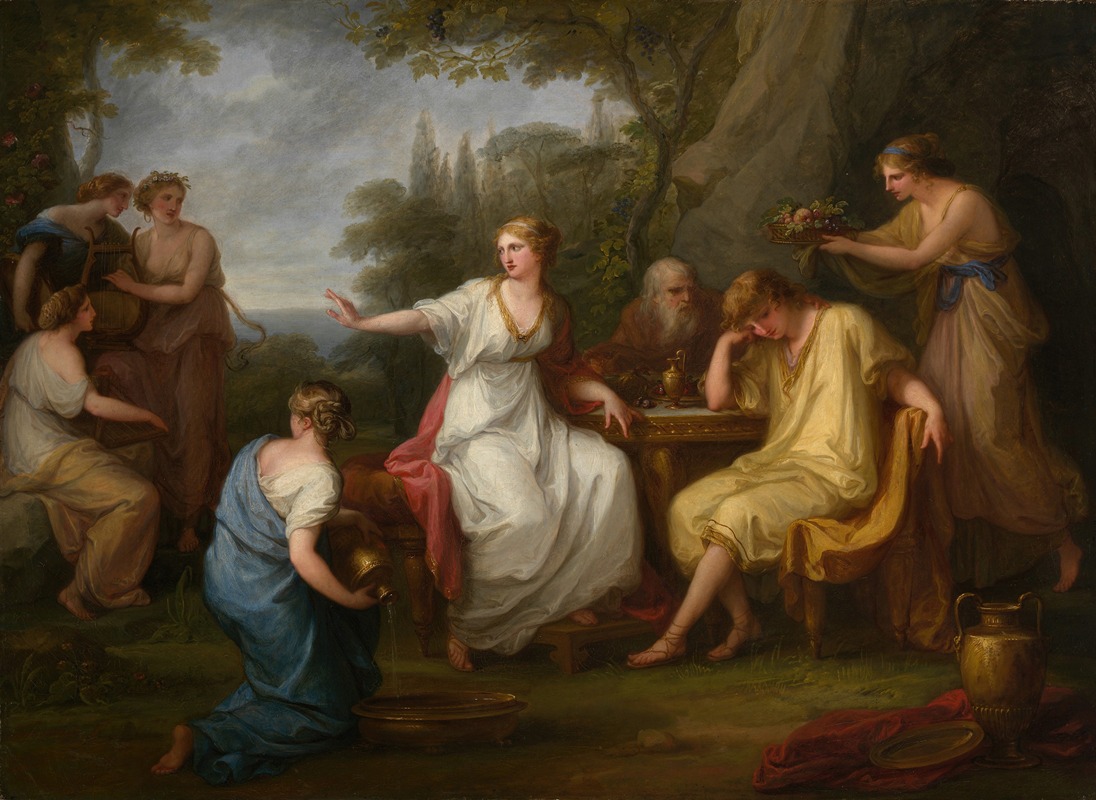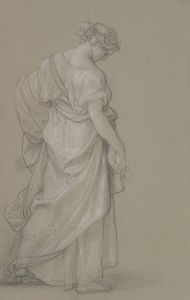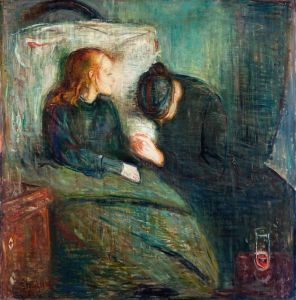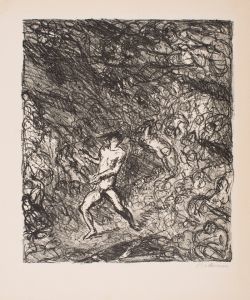
The Sorrow of Telemachus
A hand-painted replica of Angelica Kauffmann’s masterpiece The Sorrow of Telemachus, meticulously crafted by professional artists to capture the true essence of the original. Each piece is created with museum-quality canvas and rare mineral pigments, carefully painted by experienced artists with delicate brushstrokes and rich, layered colors to perfectly recreate the texture of the original artwork. Unlike machine-printed reproductions, this hand-painted version brings the painting to life, infused with the artist’s emotions and skill in every stroke. Whether for personal collection or home decoration, it instantly elevates the artistic atmosphere of any space.
"The Sorrow of Telemachus" is a painting by the Swiss-born Austrian Neoclassical artist Angelica Kauffmann. Created in 1783, this artwork is one of Kauffmann's notable contributions to the Neoclassical movement, which sought to revive the classical art and culture of ancient Greece and Rome.
Angelica Kauffmann was born on October 30, 1741, in Chur, Switzerland, and she became one of the most prominent female artists of the 18th century. She was a founding member of the Royal Academy of Arts in London and was highly regarded for her history paintings, portraits, and genre works. Kauffmann's education in the arts began at an early age under the guidance of her father, Johann Joseph Kauffmann, who was also a painter.
"The Sorrow of Telemachus" depicts a scene from the epic poem "The Odyssey," attributed to the ancient Greek poet Homer. The painting illustrates the emotional turmoil of Telemachus, the son of Odysseus, as he yearns for his father's return from the Trojan War. In the narrative, Telemachus embarks on a journey to seek news of his father, who has been absent for many years.
In the composition, Kauffmann captures the essence of Telemachus's sorrow and longing. The young man is portrayed with a melancholic expression, emphasizing his deep emotional state. The use of soft, muted colors and delicate brushwork enhances the overall mood of the painting, creating a sense of introspection and contemplation.
Kauffmann's attention to detail and her ability to convey complex emotions through her subjects are evident in this work. The classical elements in the painting, such as the drapery and the architectural background, reflect the influence of ancient Greek and Roman art on her style. This adherence to classical ideals is a hallmark of the Neoclassical movement, which sought to emulate the virtues of antiquity.
Throughout her career, Angelica Kauffmann was celebrated for her ability to blend classical themes with contemporary sensibilities. Her works often featured strong, expressive figures and a keen understanding of human emotion. "The Sorrow of Telemachus" is a prime example of her skill in narrative painting and her dedication to the principles of Neoclassicism.
Kauffmann's legacy as an artist is significant, as she broke barriers for women in the art world and achieved widespread recognition during her lifetime. Her contributions to the arts were acknowledged by her contemporaries, and her works continue to be studied and admired today.
"The Sorrow of Telemachus" remains an important piece within Kauffmann's oeuvre, showcasing her mastery of composition, her sensitivity to emotional expression, and her commitment to classical ideals. The painting is held in high regard and is part of various art collections and exhibitions that celebrate the achievements of Angelica Kauffmann and the broader Neoclassical movement.


















